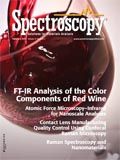Short Courses
Short Courses
February 2012
25–26 DPOLY Short Course: Case Studies in Polymer Physics from the Industrial Research World
Boston, MA
www.aps.org/meetings/march/events/workshops/dpoly.cfm
March 2012
12 Introduction to Inductively Coupled Plasma Atomic Emission Spectrometry
Orlando, FL
12 Side Illuminated Optical Fiber Sensor with a High Density of Sensing Points
Orlando, FL
13 Fundamentals of Particle Size Analysis with an Emphasis on Light Scattering Techniques
Orlando, FL
14–15 Basic Theory, Instrumentation and Applications of Vibrational Spectroscopy (Raman, Mid-Infrared, and Near-Infrared) in Materials Science)
Orlando, FL
24–25 Analysis and Interpretation of Mass Spectral Data
San Diego, CA
24–25 Spectroscopic Method Development: Qualitative & Quantitative Techniques
San Diego, CA
26 High-Throughput Method Development for Drug Analysis by LC–MS
San Diego, CA
26–27 Infrared Spectral Interpretation: A Systematic Approach
San Diego, CA
27 Introduction to GLP Regulations and Bioanalytical Method Validation by LC–MS-MS
San Diego, CA
27–28 NMR Spectral Interpretation and Organic Spectroscopy: A Problem-Based Learning Approach
San Diego, CA

LIBS Illuminates the Hidden Health Risks of Indoor Welding and Soldering
April 23rd 2025A new dual-spectroscopy approach reveals real-time pollution threats in indoor workspaces. Chinese researchers have pioneered the use of laser-induced breakdown spectroscopy (LIBS) and aerosol mass spectrometry to uncover and monitor harmful heavy metal and dust emissions from soldering and welding in real-time. These complementary tools offer a fast, accurate means to evaluate air quality threats in industrial and indoor environments—where people spend most of their time.
NIR Spectroscopy Explored as Sustainable Approach to Detecting Bovine Mastitis
April 23rd 2025A new study published in Applied Food Research demonstrates that near-infrared spectroscopy (NIRS) can effectively detect subclinical bovine mastitis in milk, offering a fast, non-invasive method to guide targeted antibiotic treatment and support sustainable dairy practices.